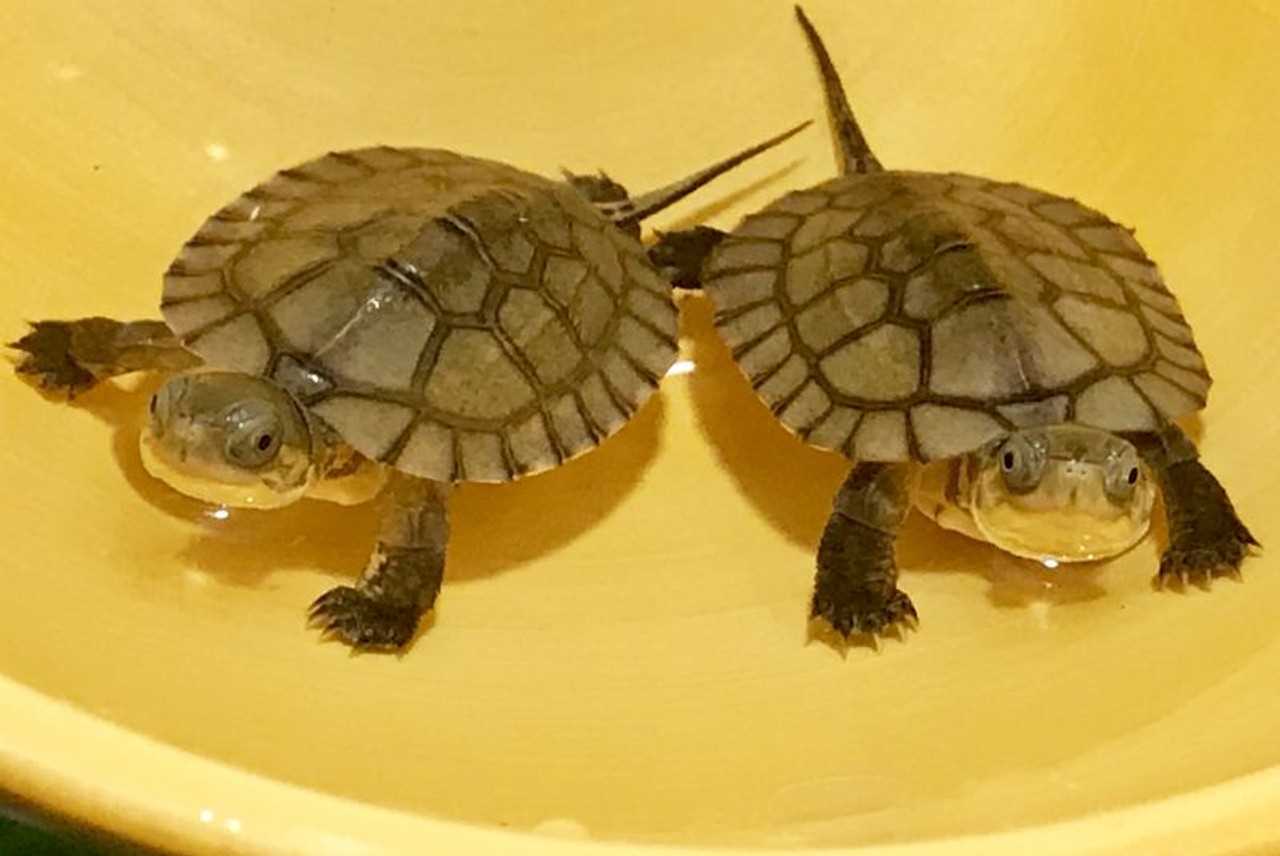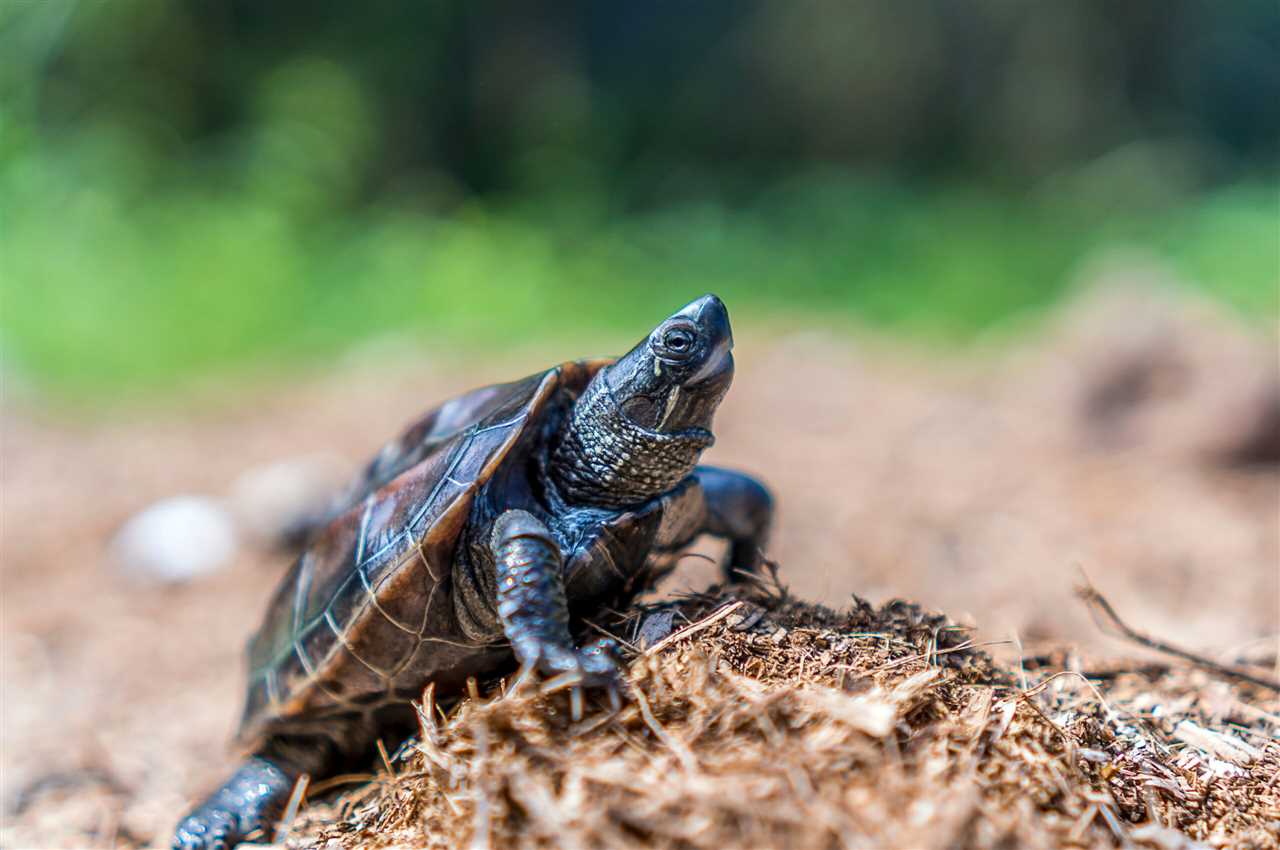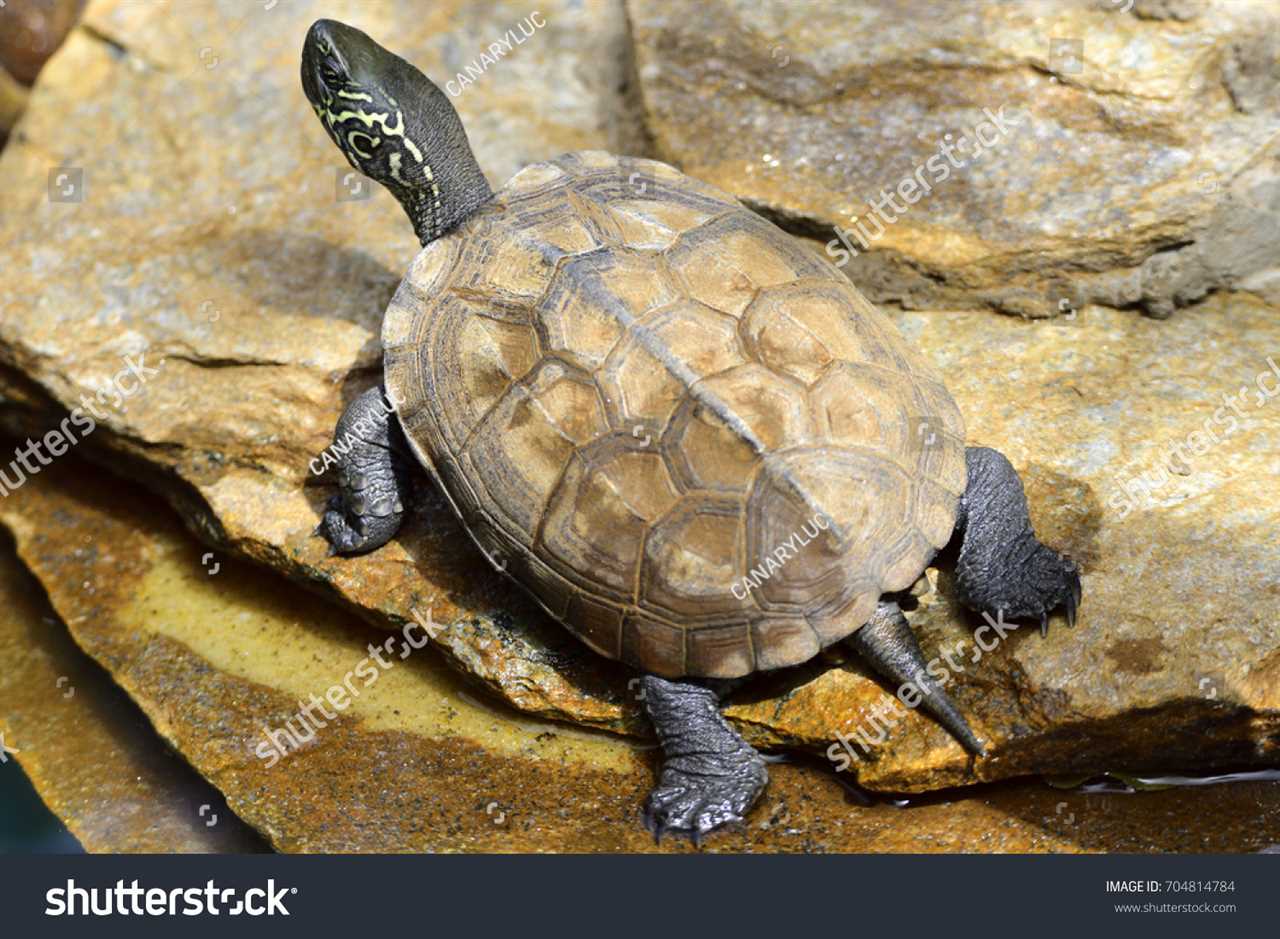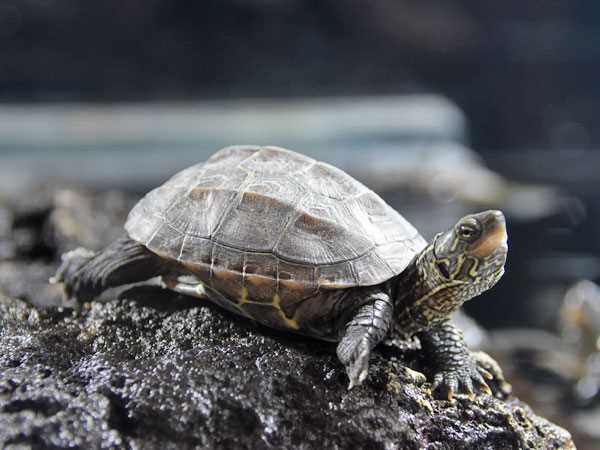
This aquatic turtle occupies a variety of habitats within its range, including ponds, lakes, marshes, and slow-moving rivers. It can adapt to both freshwater and brackish water environments. However, due to habitat loss and degradation, its distribution has significantly declined over the years.
The Chinese pond turtle is a small to medium-sized amphibian, typically measuring between 12 to 23 centimeters in carapace length. It has a distinctive olive to dark brown carapace, with yellow or orange markings on the edge of its shell. The plastron is generally yellow with black blotches.
What is a Chinese Pond Turtle?
The Chinese Pond Turtle is characterized by its dark carapace and olive or brownish-green coloration. It has a flattened, smooth shell that allows it to easily maneuver through the water. Its limbs and head are also adapted for swimming and diving.
| Common name | Chinese Pond Turtle | ||||||||||||||||||||||
|---|---|---|---|---|---|---|---|---|---|---|---|---|---|---|---|---|---|---|---|---|---|---|---|
| Scientific name | Mauremys reevesii | ||||||||||||||||||||||
| Family | Geoemydidae | ||||||||||||||||||||||
| Size | Up to 22 centimeters in carapace length | ||||||||||||||||||||||
| Habitat | Freshwater ponds, l
Why are Chinese Pond Turtles Important?In addition, Chinese Pond Turtles also act as indicators of environmental health. They are sensitive to changes in water quality, temperature, and habitat degradation. Therefore, their presence or absence in a particular area can serve as an early warning sign of potential ecological issues. Conservation of Chinese Pond Turtles is crucial to preserve the biodiversity of freshwater habitats. However, these turtles face numerous environmental threats that have led to a decline in their population. Habitat loss, pollution, illegal collection for the pet trade, and invasive species are some of the main challenges that these turtles face. Efforts are being made to protect and conserve Chinese Pond Turtles through various initiatives. These include habitat restoration, enforcement of wildlife protection laws, and public awareness campaigns. Conservation organizations and government agencies are working together to ensure the survival of this species for future generations.
Protecting Chinese Pond Turtles is not only important for the conservation of this specific species, but also for the overall health and balance of freshwater ecosystems. By preserving their habitat and ensuring their survival, we can contribute to the protection of a diverse range of aquatic species and maintain the ecological integrity of these vital habitats. HabitatChinese Pond Turtles are well-adapted to an aquatic lifestyle. They have webbed feet and a streamlined shell, which enable them to swim efficiently in water. Their ability to absorb oxygen through their skin allows them to stay submerged for extended periods. This adaptation helps them avoid predators and increases their chances of survival in their habitat. Unfortunately, the natural habitat of Chinese Pond Turtles is under constant threat. Urbanization, agriculture, and pollution are major factors contributing to the loss and degradation of their habitats. As human activities continue to encroach upon their territories, the population of Chinese Pond Turtles continues to decline. Efforts are being made to protect and restore the habitats of Chinese Pond Turtles. Conservation organizations are working to raise awareness, establish protected areas, and promote sustainable practices that will aid in the survival of this endangered species. By preserving their natural habitat, we can ensure the long-term survival of Chinese Pond Turtles and maintain the delicate balance of our ecosystems. Natural Habitat of Chinese Pond TurtlesChinese pond turtles are well adapted to their freshwater habitat. They have webbed feet that help them swim, and their shell is streamlined to reduce drag in the water. This makes them efficient swimmers and allows them to navigate through their aquatic environment with ease. Due to habitat destruction and illegal pet trade, the Chinese pond turtle population has declined significantly in recent years. Efforts are being made to protect their natural habitat and establish captive breeding programs to ensure their survival in the wild. Environmental Threats to Chinese Pond Turtle Habitat
The Chinese Pond Turtle is a species of aquatic reptile that is native to parts of China. It is an endangered species, and its habitat is under threat due to a variety of environmental factors. Pollution is another significant threat to the Chinese Pond Turtle habitat. Many wetland areas are contaminated with pesticides, fertilizers, and other chemicals that are used in agricultural practices. These pollutants can enter the water and harm the turtles and other aquatic organisms. Additionally, pollution can affect the quality of the turtles’ food sources, leading to a decline in their overall health and population. Invasive species are also posing a threat to the Chinese Pond Turtle habitat. Non-native plants and animals can outcompete the native species for resources and disrupt the balance of the ecosystem. This can lead to a decline in the availability of food and nesting sites for the Chinese Pond Turtles, making it more difficult for them to survive and reproduce. Climate change is another factor that is affecting the Chinese Pond Turtle habitat. Rising temperatures can alter the water levels and temperature in wetland areas, which can impact the turtles’ ability to find suitable nesting sites and regulate their body temperature. Changes in precipitation patterns can also affect the availability of water, which is essential for the turtles’ survival. Freshwater Species: Chinese Pond TurtleAn Aquatic AmphibianThe Chinese Pond Turtle, scientific name Mauremys reevesii, is a freshwater species that can be found in ponds, lakes, and slow-moving rivers. It is a small to medium-sized turtle, with males typically measuring around 12-15 centimeters in length and females slightly larger at 20-25 centimeters. Dietary Habits of Chinese Pond Turtles
Chinese Pond Turtles are omnivorous, meaning they consume both plant materials and animal matter. Their diet primarily consists of aquatic plants, such as algae, pondweed, and water lilies. They also consume small invertebrates, such as insects, snails, and worms. The Chinese Pond Turtle is equipped with a sharp beak that allows it to bite and tear into vegetation. They are also skilled hunters, capable of capturing and consuming small prey items, although their diet mostly revolves around plant matter. Importance for ConservationConservation efforts should focus on preserving the freshwater ecosystems that the Chinese Pond Turtle relies on. This includes protecting and restoring their natural habitats, mitigating pollution levels, and preventing the introduction of invasive species that can disrupt their food web. What Do Chinese Pond Turtles Eat?Chinese Pond Turtles are omnivorous, meaning they eat both plant and animal-based foods. In the wild, their diet consists of various aquatic plants such as water lettuce, water hyacinth, and duckweed. These turtles also consume algae that grow on rocks and logs. In addition to plants, Chinese Pond Turtles feed on small aquatic invertebrates such as worms, snails, and insects. They use their sharp beak-like jaws to crush and consume their prey. This diverse diet allows them to obtain the necessary nutrients for their survival and growth. Dietary Requirements for Chinese Pond TurtlesThe Chinese Pond Turtle (Mauremys reevesii) is a freshwater reptile species native to China, Japan, and Korea. As an aquatic turtle, it primarily inhabits ponds, marshes, and slow-moving freshwater bodies. Its diet consists of a variety of plant and animal matter. Plant Matter in the DietChinese Pond Turtles are omnivores, meaning they consume both plant and animal materials. Plant matter forms a crucial part of their diet, providing essential nutrients and fiber. They primarily feed on aquatic vegetation, including submerged and floating plants such as water lettuce, duckweed, and water lilies. These plants not only offer a food source but also provide cover and shelter for the turtles. Animal Matter in the DietIn addition to plant matter, Chinese Pond Turtles also consume various animal materials. This includes small invertebrates such as insects, worms, snails, and crustaceans. They may also feed on small fish, tadpoles, and amphibians. This diverse diet ensures that they obtain the necessary proteins and other essential nutrients. In captivity, Chinese Pond Turtles are commonly fed a combination of commercial turtle pellets, fresh fruits and vegetables, and live or frozen prey items. It is essential to offer a varied diet to ensure they receive all the necessary nutrients. Additionally, vitamin and mineral supplements may be recommended by a veterinarian to ensure proper nutrition. Conservation Efforts for Chinese Pond Turtles
Protecting Natural HabitatsOne of the primary focuses of conservation efforts for Chinese Pond Turtles is to protect their natural habitats. This involves identifying and preserving the various pond ecosystems where these turtles live. Measures such as establishing protected areas, implementing strict regulations against illegal hunting and logging, and promoting sustainable land management practices help to safeguard the turtle’s habitats. Captive Breeding Programs
In addition to protecting natural habitats, captive breeding programs play a vital role in the conservation of Chinese Pond Turtles. These programs involve breeding turtles in controlled environments, such as zoos or specialized facilities, with the aim of increasing the turtle population. By carefully managing breeding pairs and ensuring that proper conditions are met for reproduction, these programs help to maintain genetic diversity and prevent the decline of the species. Public Awareness and EducationInternational Cooperation
Conservation Efforts for Chinese Pond TurtlesOne of the main conservation efforts for Chinese pond turtles is the establishment of protected areas and reserves. These areas provide a safe and secure habitat for the turtles, ensuring that they have access to suitable nesting sites, food sources, and clean water. The creation of protected areas also helps to mitigate the threats posed by habitat destruction and pollution. Another important conservation measure for Chinese pond turtles is the enforcement of strict regulations and laws against the illegal pet trade. Chinese pond turtles are often captured and sold as pets, which further reduces their already dwindling population. By cracking down on the illegal pet trade and raising awareness about the importance of conservation, authorities are working to deter the capture and sale of these turtles. In addition to protected areas and regulations, conservation efforts for Chinese pond turtles also involve habitat restoration projects. These projects aim to restore and improve the natural habitats of the turtles, which have been degraded or destroyed by human activities. This may include planting native vegetation, improving water quality, and implementing erosion control measures. Furthermore, research and monitoring play a crucial role in the conservation of Chinese pond turtles. Scientists and conservation organizations conduct studies to better understand the biology, ecology, and behavior of these turtles. By collecting data on population size, habitat use, and reproductive patterns, researchers can develop effective conservation strategies and track the success of conservation efforts over time. Education and public outreach are also important components of conservation efforts for Chinese pond turtles. By raising awareness about the plight of these turtles and the importance of their conservation, individuals, communities, and governments can take action to protect their habitats and support conservation initiatives. This may include educational campaigns, community involvement, and the promotion of sustainable practices. Overall, the conservation efforts for Chinese pond turtles are crucial for the survival of this endangered species. By establishing protected areas, enforcing regulations, restoring habitats, conducting research, and raising awareness, it is possible to protect and conserve the Chinese pond turtle and ensure the long-term survival of this unique aquatic reptile. Importance of Protecting Chinese Pond TurtlesEcological SignificanceFurthermore, these turtles contribute to the biodiversity of their habitats. They have specific roles in the food chain, playing the dual role of predator and prey. As predators, they help control the population of small aquatic animals, such as insects and crustaceans. As prey, they provide a food source for larger predators, such as birds and mammals. Conservation ChallengesThe Chinese Pond Turtle is currently listed as an endangered species, primarily due to habitat loss and fragmentation. Human activities, such as urbanization and agricultural practices, have led to the destruction and degradation of their natural habitats, including ponds, lakes, and wetlands. Additionally, the illegal pet trade has been a significant threat to their survival. Chinese Pond Turtles are highly sought-after in the exotic pet market, leading to overexploitation of wild populations. This, combined with the destruction of their habitats, has resulted in a significant decline in their numbers. The Need for ProtectionProtecting the Chinese Pond Turtle is essential for the overall conservation of the freshwater ecosystem. By preserving their habitats, we can ensure the survival of numerous other aquatic species that rely on these habitats for their survival. The conservation of the Chinese Pond Turtle also has cultural significance. They have been revered in Chinese culture for centuries and are often associated with longevity and good fortune. Protecting this species is a way of preserving cultural heritage and traditions. Efforts need to be made to address the main threats to the Chinese Pond Turtle. This includes implementing legislation to protect their habitats, enforcing strict regulations on the pet trade, and raising public awareness about the importance of their conservation. By taking action now, we can ensure the survival of this incredible species and contribute to the preservation of the delicate balance of our freshwater ecosystems.  I’m Lena Adams—a product of an unconventional upbringing in the African wilderness. My father, a daring explorer of African wildlife, sparked my fascination with reptiles, a passion that intertwined with the tragic loss of my mother during an expedition, leaving an indelible mark on my life. Driven to understand the creatures that captivated my parents, I embarked on my journey, sharing insights about reptiles, frogs, and lizards on my website. Through my explorations and conservation efforts, I honour my family’s legacy while seeking connections—to the creatures, nature, and the mother whose presence I yearn to understand. |




